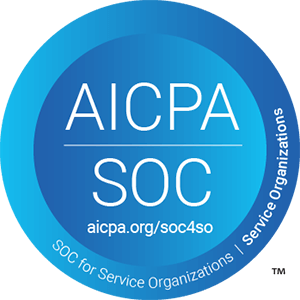‘To OKR or to KPI, that is the question’
In the realm of strategic management, selecting the right framework to drive performance and measure success is crucial. Enter OKRs (Objectives and Key Results) and KPIs (Key Performance Indicators)—two essential tools that can shape your strategic approach.
OKRs focus on setting ambitious goals and aligning teams toward achieving them, while KPIs provide a clear measure of performance against specific targets. Both frameworks offer unique advantages, but understanding their differences is key to leveraging them effectively.
In this blog, we’ll unravel the distinctions between OKRs and KPIs, highlighting how each can be utilized to enhance organizational performance. Whether you’re aiming for bold growth or tracking specific metrics, this guide will help you navigate the choice and implement the right strategy for your business’s success. Discover how aligning with the right framework can propel your organization to new heights.
OKR vs KPI: What is OKR?
OKR, or Objectives and Key Results, is a popular goal-setting framework used by businesses and teams to align their efforts, track progress, and ensure everyone is focused on achieving common goals.
The goals are set in a way that they can be measured and tracked, which makes it easy to determine whether or not your team is on track to achieve them. Establishing clear business goals is crucial for measuring performance and organizational growth.
Typically, OKRs highlight specific aspects that need enhancement (these are your Objectives) in order to achieve targets related to Key Performance Indicators (KPIs).
The OKR framework is flexible, but company OKRs are more effective when they’re connected to the OKRs of other departments and team members. 34% of team members said they’d feel more motivated at work if they understood how their work connected to the company’s mission. You want motivated team members because they’ll work harder and reach goals faster.
When it comes to OKRs, Peoplebox offers a smart and intuitive OKR platform that streamlines the entire process. You can experience it yourself below.
What is KPI?
KPI, which stands for Key Performance Indicator, is a quantifiable metric that helps businesses and organizations measure their progress and success in achieving specific objectives. Tracking and assessing business performance through KPIs and OKRs is crucial for informing decisions and driving growth.
KPIs are essential for tracking performance with performance metrics, making data-driven decisions, and ensuring that teams are aligned toward common goals.
In a nutshell, KPIs act as a compass that guides your business toward its targets. They can be applied to various aspects of your organization, such as sales, marketing, customer service, or operations.
Monitoring and analyzing KPIs regularly can help you identify areas that need improvement—and make necessary adjustments.
Why do Business Performance Metrics Matter?
KPIs are quantified measures used to gauge an organization’s performance based on predetermined targets. They provide objective data about the most critical factors that will lead to success, making them good information to base decisions on.
Good KPIs are Specific, Measurable, Achievable, Relevant, and Time-bound. Such a performance indicator provides insight into efficiency, productivity, and overall progress toward strategic goals. Accurate measurement of KPIs with suitable performance metrics leads to actionable information, optimizing performance.
Why do OKRs Matter?
Ideas are easy but the execution is difficult. OKRs help you transform your ideas into great execution.
They help enhance employee engagement and motivate teams to perform better.
OKR vs KPI: How are they Different?
Here is a comprehensive overview of how OKR and KPI are different from one another.
Purpose
OKRs help with alignment, challenging goal-setting, engagement, and transparency, but the principal purpose of KPIs is to measure the effectiveness of your higher-level business performance metrics or of its activities for which you are responsible (for example, projects, programs, products).
Scope
Since OKRs take on a multi-dimensional approach toward setting goals as a full-fledged management methodology, their scope is larger than that of KPIs. Thus, in practice, KPIs are utilized as a funnel to a much more holistic methodology like OKRs.
Flexibility
OKRs, unlike KPIs, are dynamic performance indicators as they should be flexible and can be changed or discarded anytime if necessary. Instead, they are often updated, renewed, and changed to match findings in real time. Therefore, they are under constant review in harmony with organizational priorities.
Direction
KPI tends to monitor the ‘steady state’ and the benchmarks more while the OKR framework is more dedicated to being audacious and bold, usually tied to a mission.
Timeline
OKRs would indeed typically occur on quarterly cycles or half-yearly cycles (considering the cadence of your business, teams, and employees), whereas KPIs are high-level trackers that track larger business areas over considerable durations.
Examples of KPI and OKR
Now you know the difference between KPIs and OKRs. Now let’s put them into perspective by looking at some examples of KPIs and OKRs.
1️⃣KPI examples
Let’s start with some KPI examples (Key Performance Indicators) in different areas of a business:
- Sales
- Monthly sales revenue
- Average deal size
- Conversion rate from lead to customer
- Marketing
- Website Traffic
- Social media engagement
- Number of marketing-qualified leads
- Customer Service
- First response time
- Customer satisfaction score
- Resolution rate
2️⃣OKR examples
Now, let’s look at some examples of OKRs (Objectives and Key Results) for a hypothetical company:
The marketing team plays a crucial role in achieving specific key results by breaking down larger company objectives into actionable tasks that encourage creativity and ambition.
Objective 1: Improve customer satisfaction
- Key Result 1: Increase customer satisfaction score from 80 to 90
- Key Result 2: Decrease average first response time from 4 hours to 1 hour
- Key Result 3: Train customer service team on advanced problem-solving techniques by the end of Q2
Objective 2: Increase marketing reach and engagement
- Key Result 1: Grow website traffic by 25% in Q2
- Key Result 2: Boost social media engagement by 30% over the next 3 months
- Key Result 3: Develop and launch a new content marketing campaign by the end of Q2
Explore more examples of OKRs
- OKR Examples for HRs
- OKR Examples for Customer Success Teams
- OKR Examples for Finance Teams
- OKR Examples for Chief of Staff
- OKR Examples for Engineering Teams
- OKR Examples for Product Team
OKR VS KPI: Do they Work Together?
OKRs and KPIs OKRs can be used in tandem with KPIs to create an all-inclusive means to measure performance and track progress. OKRs help you to set objectives based on desired outcomes and to measure how much progress you’re making toward such objectives. KPIs allow you to measure where you stand on a given dimension.
OKRs help in problem-solving and improving the processes to drive innovation and results. Tracking OKRs and KPIs will provide you with a bigger picture of the strategy you curated to achieve your goals.
Together, both provide a very clear view of your performance and allow you to adjust accordingly. Let us look into the example below to understand the concept better.
Let’s say that critical business as usual for your Sales team is to bring in more business. You create a KPI that measures the conversion rate as X% every week.
As long as X% business is coming every week you know everything is going well. But if the X% target is not met it indicates the average sales going down. You can create an Objective to improve the conversion rate.
To create clear Key Results for this Objective, you’ll need to dig in for exactly what caused the conversion rate to go down.
Common Pitfalls During OKR and KPI Setting
When implementing OKRs and KPIs, look out for these common errors. They can hamper progress and this framework can prove to be more of a hassle than help.
- Setting too many goals. Quality is always key! An excessive number of objectives, indicators, and results can dilute the focus and resources. This can hinder progress and lead to no meaningful outcomes.
- Lack of Clarity and Definition. OKRs and KPIs require a crystal clear definition for their effectiveness. Poorly defined Key Results in OKRs can prevent tracking the result, and vague KPIs are sure to confuse the team and render non-actionable decision-making, so the entire framework thrives on specificity and clarity for performance. A clear OKR and KPI Metric and milestone is important.
- Lack of Periodic Review. OKRs as well as KPIs need periodic checks-in. In the absence of regular reviews, OKRs may get stale, while KPIs might not be able to capture the ever-changing business needs of the organization. OKRs and KPIs need continuous monitoring to ensure that any changes are usefully tracked and pursued toward organizational objectives.
- Ignoring feedback and adaptation. Feedback is essential in OKRs as well as in KPIs. Not paying attention to it can lead either to having objectives or metrics that don’t resonate with the team or drive the desired outcomes. A cycle of feedback and adaptation on both sides would need to be ongoing to stay effective.
- Data Overload and Focus Issues. Overemphasizing too many KPIs can lead to data overload and dilute focus, while too many OKRs can scatter efforts and reduce impact. Striking a balance is essential; too many metrics or goals can overwhelm teams and hinder progress.
Best Practices to Measure Performance with OKRs and KPIs
Here are a few tips to ensure the best result from the implementation of OKR and KPI:
🎯Connect your OKRs and KPIs to the organizational goals. OKRs and KPIs connected to your broader company strategy ensure employees are working toward the organization’s priorities, facilitating steady, ongoing progress toward short and long-term goals.
🎯Keep a limit on the number of KPIs and OKRs. Not everything worthwhile is important and not everything important is worthwhile. Keeping an upper limit can help you focus on your goals and achieve them to your best potential.
🎯Be Ambitious! Set challenging yet achievable goals. Your goals should help you become a better version of yourself every day.
🎯Manually setting, tracking, and updating OKRs and KPIs can be tasking and error-prone — goal-setting software ensures accuracy while keeping your OKRs and KPIs transparent, collaborative, and efficient.
🎯Do not Build OKRs in a vacuum without visibility into what other parts of the business are doing. OKRs should be created from the top down. Start by defining your OKRs for your organization overall, and then roll them down to the department level, team level, and maybe even the individual level.
Which is more Suitable for you? OKR or KPI?
OKRs is holistic in terms of setting ambitious objectives that align with your organization’s goals and demonstrable key results to measure success. Considering the present power dynamics, it also allows cooperation among individual employees toward common goals while providing ownership to each employee, which will give you a competitive advantage. OKRs would be suited if you have a very dynamic environment that requires adaptability and flexibility, like fast-paced industries, startups, and agile teams.
KPIs are more targeted in nature as they tend to focus specifically on some ongoing metrics that directly tie into performances. These allow you to closely monitor and measure the performance of your core processes. Because of this narrow focus, reliance is placed on clarity and precision so that it is easier to set benchmarks, establish targets, and monitor progress.
Ideally, it is considered best to use OKR and KPI in unison for maximum benefit. OKRs measure added value for customers and KPIs the result. This makes it clear that OKRs and KPIs are neither identical nor mutually exclusive. Therefore, for holistic goal management, both concepts should be used in coordination with one another.
Bridge to Success Through OKRs and KPIs with Peoplebox
Smart organizations are highly focused on achieving tangible results. And some of those who achieve that, like Google, use OKRs and KPIs to strike a balance between setting ambitious goals and measuring performance towards those goals.
OKRs and KPIs ensure that every action is aligned with concrete outcomes, elevating their performance to new heights.
OKRs and KPIs act as guiding lights, not only setting targets but also monitoring progress in real-time. They provide the roadmap that keeps organizations on course, making sure efforts match strategic goals.
To take your organization to this advanced level, tools like Peoplebox are invaluable. Offering a range of features, including OKR and strategy execution platforms, Peoplebox makes integrating OKRs and KPIs seamless. This not only enhances goal tracking but also fosters a culture of accountability and success.
Mastering the art of KPIs and OKRs with platforms like Peoplebox could be the key to staying ahead of the curve.to learn more, you can request a free demo with us!
FAQs
Q: What are OKRs and KPIs, and how do they differ?
OKRs (Objectives and Key Results) are goal-setting frameworks that outline specific objectives and the measurable results that indicate their achievement. KPIs (Key Performance Indicators), on the other hand, are specific metrics used to measure the performance of a particular aspect of a business. While OKRs focus on setting ambitious objectives and outcomes, KPIs concentrate on tracking ongoing performance.
Q: Can you provide an example of OKR and KPI?
Consider an e-commerce company. An OKR could be “Increase customer retention by 20% within the next quarter.” The KPIs associated with this OKR might include “Customer Churn Rate,” “Repeat Purchase Rate,” and “Net Promoter Score,” all of which quantify the success of the objective.
Q: Why are both OKRs and KPIs critical for businesses?
OKRs provide a strategic direction, guiding teams towards ambitious goals that align with the organization’s vision. KPIs, on the other hand, offer real-time insights into operational performance, helping businesses identify areas of success or areas needing improvement. Together, they ensure a balanced approach that drives growth and operational efficiency.
Q: Can OKRs and KPIs be used together?
Absolutely. OKRs and KPIs complement each other. OKRs set the direction and inspire innovation, while KPIs provide the quantitative data needed to track progress and make informed decisions. By using them together, organizations can ensure they’re not only striving for growth but also maintaining operational excellence.
Q: Which one should businesses prioritize – KPIs or OKRs?
Neither should be prioritized over the other; they serve different purposes. OKRs are vital for defining ambitious goals and driving innovation. KPIs are essential for monitoring ongoing performance and operational effectiveness. A balanced approach that integrates both is key for overall success. is key for overall success.








